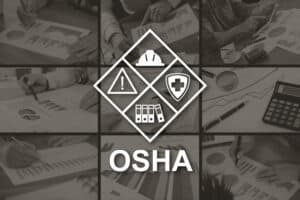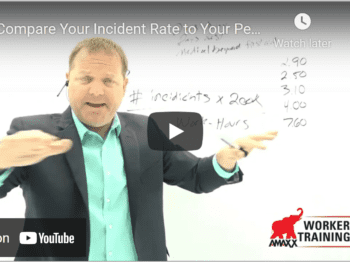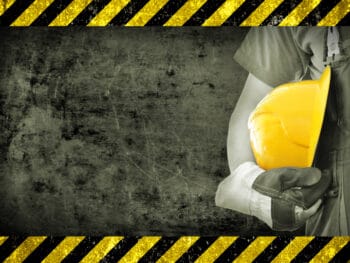The Occupational Safety and Health Administration (OSHA) is a part of the workers’ compensation system that is often ignored until it becomes an issue. All interested stakeholders should be aware of this agency and how it can reduce the program costs and prevent work injuries. It should also be considered even if a work injury has not occurred. Now is the time to understand this federal agency and how it impacts your program.
What is OSHA?
OSHA is a regulatory agency charged with ensuring a space workplace nationwide, and it was established in 1970. Under the federal framework, the agency within the US Department of Labor was created to provide training and education to all interested stakeholders. It also has an enforcement component that is defined to penalize employers for not ensuring a safe workplace.
OSHA has the statutory authority to inspect and ensure compliance with most private-sector employers. The enabling statute also allows states to develop their agencies provided they meet various federal standards. While OSHA can be viewed as a curse, it can provide proactive compliance investigations that allow employers to take corrective action.
Click Link to Access Free PDF Download
“4-Step Sequence For Effective Employee Screening, Hiring, & Placement”
Knock, Knock: OSHA is Here
The primary function of OSHA is to ensure employers and provide a safe work environment. There are five types of OSHA safety inspections.
- Imminent danger situations: Conducted when OSHA receives a credible report of an unsafe workplace that may result in severe injury or death;
- Severe injuries and illnesses: Conducted when OSHA receives a report of workplace exposure to chemicals or substances;
- Worker complaints: Conducted when OSHA receives a credible report of an unsafe work environment:
- Referrals: Conducted in instances similar to a complaint from a stakeholder;
- Targeted inspections: Conducted within an industry suspected of unsafe workplace conditions and
- Follow-up inspections: Conducted when an employer has significant workplace safety violations to ensure full compliance.
Each type of inspection serves a specific agency purpose. OSHA has the authority to conduct investigations following work injuries or upon receiving a complaint about an unsafe work environment. Employers subject to OSHA’s jurisdictions have various rights and responsibilities before and during an OSHA investigation:
- Employer Rights: All employers have a right to be notified of an OSHA inspection and have certain persons present during the process.
- Employer Responsibilities: All employers are responsible for cooperating with OSHA and providing requested information about hazardous conditions and substances within the workplace. They can also request OSHA to conduct a review of policies, procedures, and workplace settings that are subject to timely remediation.
While there is an adverse nature to any OSHA inspection, all interested stakeholders should welcome the process as an opportunity to ensure employee safety. The goal should always be to reduce the frequency and severity of any injury to reduce workers’ compensation program costs.
Best Practices to Avoid OSHA Penalties and Sanctions
It should be the goal of every interested stakeholder to reduce the frequency and severity of injuries in the workplace. This all starts with driving a “top down” culture of safety – requires managers and supervisors to demonstrate best safety practices at all times. Employers concerned about a situation within the workplace can also request a proactive OSHA review and comply with the reporting requirements. Other steps can also be taken to mitigate possible safety infractions should a future investigation occur:
- Develop an effective OSHA compliance program that includes a trained compliance officer to coordinate efforts with legal and human resources on safety matters;
- Provide consistent and ongoing safety training to all employees;
- Provide proper training to all employees regarding the maintenance of tools and equipment. Prohibit the modification of this equipment and consistently enforce policies and procedures; and
- Train all employees how to cooperate with OSHA staff during an inspection.
All safety records and other documents should also be stored in a safe and secure location that is easily accessible. Consider going the extra mile for employees who speak English as a second language in response to the changing demographics of the American workforce.
Conclusions
OSHA plays an essential role in the workers’ compensation systems by assisting stakeholders in reducing work injuries. Now is the time for all interested stakeholders to understand the role OSHA plays in the workers’ compensation system and how it can help reduce program costs. Demanding a culture of safety at all levels within an organization can reduce the perceived threat of OSHA and help ensure a safer and better workforce.

Contact: mstack@reduceyourworkerscomp.com.
Workers’ Comp Roundup Blog: http://blog.reduceyourworkerscomp.com/
Injury Management Results (IMR) Software: https://imrsoftware.com/
©2024 Amaxx LLC. All rights reserved under International Copyright Law.
Do not use this information without independent verification. All state laws vary. You should consult with your insurance broker, attorney, or qualified professional.


















